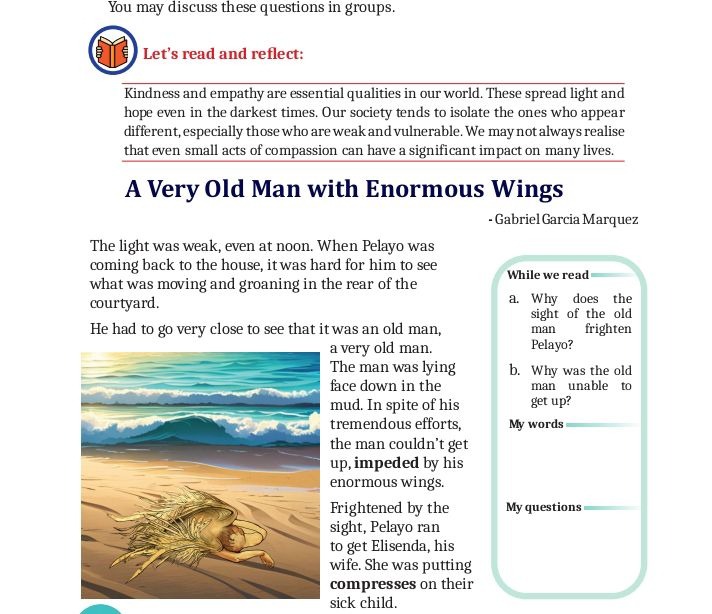Detailed Study notes on the poem "The Road Not Taken" by Robert Frost
Study Notes on The Road Not Taken
Introduction
Robert Frost’s poem The Road Not Taken, published in 1916, is one of the most well-known and frequently analyzed poems in American literature. It presents a reflective and symbolic exploration of choices and their impact on life. The poem follows a traveler who arrives at a fork in a forest path and must decide which road to take. This moment of decision serves as a metaphor for the choices we all face in life, emphasizing the difficulty of making decisions when we cannot predict their outcomes.
Setting and Context
The poem is set in an autumnal forest, as indicated by the phrase "yellow wood," which creates a mood of transition and change. The speaker comes across two diverging roads and feels regret that he cannot take both. He examines one road as far as possible before shifting his attention to the other. This moment symbolizes the thought process involved in making important life choices, where individuals often try to anticipate consequences despite having limited knowledge of what lies ahead.
The Nature of Choice
As the poem progresses, the speaker initially describes the second road as having "perhaps the better claim" because it appears less traveled. However, he soon realizes that both roads are "worn... really about the same," suggesting that the difference between them may not be as significant as it first seemed. This contradiction is crucial, as it highlights the idea that choices may not be as unique or life-changing as we perceive them to be at the time of decision. The fresh leaves covering both paths reinforce the notion that neither has been frequently traveled, emphasizing the uncertainty of each choice.
Irreversibility of Decisions
In the third stanza, the speaker expresses a desire to return someday and take the other road. However, he acknowledges that "way leads on to way," meaning that one decision leads to another, making it unlikely that he will ever return to the same point. This reflects the reality of life’s journey—once a choice is made, it sets off a chain of events that make it difficult, if not impossible, to revisit previous options. This realization adds a tone of wistfulness, as the speaker acknowledges the permanence of his decision.
Reflection and Interpretation
The final stanza shifts the perspective to the future, where the speaker imagines himself recounting his choice "with a sigh." This sigh could indicate nostalgia, contentment, or even regret. The famous concluding lines, "I took the one less traveled by, / And that has made all the difference," suggest that the speaker views his decision as significant. However, given his earlier admission that both roads were nearly identical, this statement may reflect a natural human tendency to justify past choices rather than an objective reality. Frost leaves the interpretation open-ended, allowing readers to project their own experiences onto the poem.
Themes
The poem’s major themes include the nature of decision-making, individuality, and human reflection on past choices. It explores how life is shaped by the decisions we make, yet it also questions whether those choices are as impactful as we believe. The tension between free will and fate is evident, as the speaker actively makes a decision but later frames it as something that "made all the difference," implying that it shaped his destiny. The reflective tone of the poem makes it relatable, as it mirrors the way people often look back on key moments in their lives.
Poetic Devices
Frost employs several literary devices to enhance the poem’s meaning. The central metaphor of the roads represents life choices, making the poem an extended allegory. Vivid imagery, such as the "yellow wood" and the forked path, allows readers to visualize the setting and feel the weight of the decision. The rhyme scheme, ABAAB, provides a musical flow, while the conversational style makes the poem feel personal and reflective. The symbolism of the "road less traveled" invites readers to consider whether their own choices are truly unique or simply part of life's natural course.
Conclusion
In conclusion, The Road Not Taken is a thought-provoking poem that captures the complexity of decision-making and the way people reflect on their past. It resonates with readers because it mirrors the uncertainties and reflections that accompany life’s major decisions. While the poem is often interpreted as an encouragement to take the unconventional path, a closer reading suggests that it is more about the way people assign meaning to their past choices rather than the actual significance of the choices themselves. Frost masterfully blends simplicity with depth, making The Road Not Taken a timeless poem that continues to inspire and provoke thought.




Comments
Post a Comment
Please share your feedback and questions